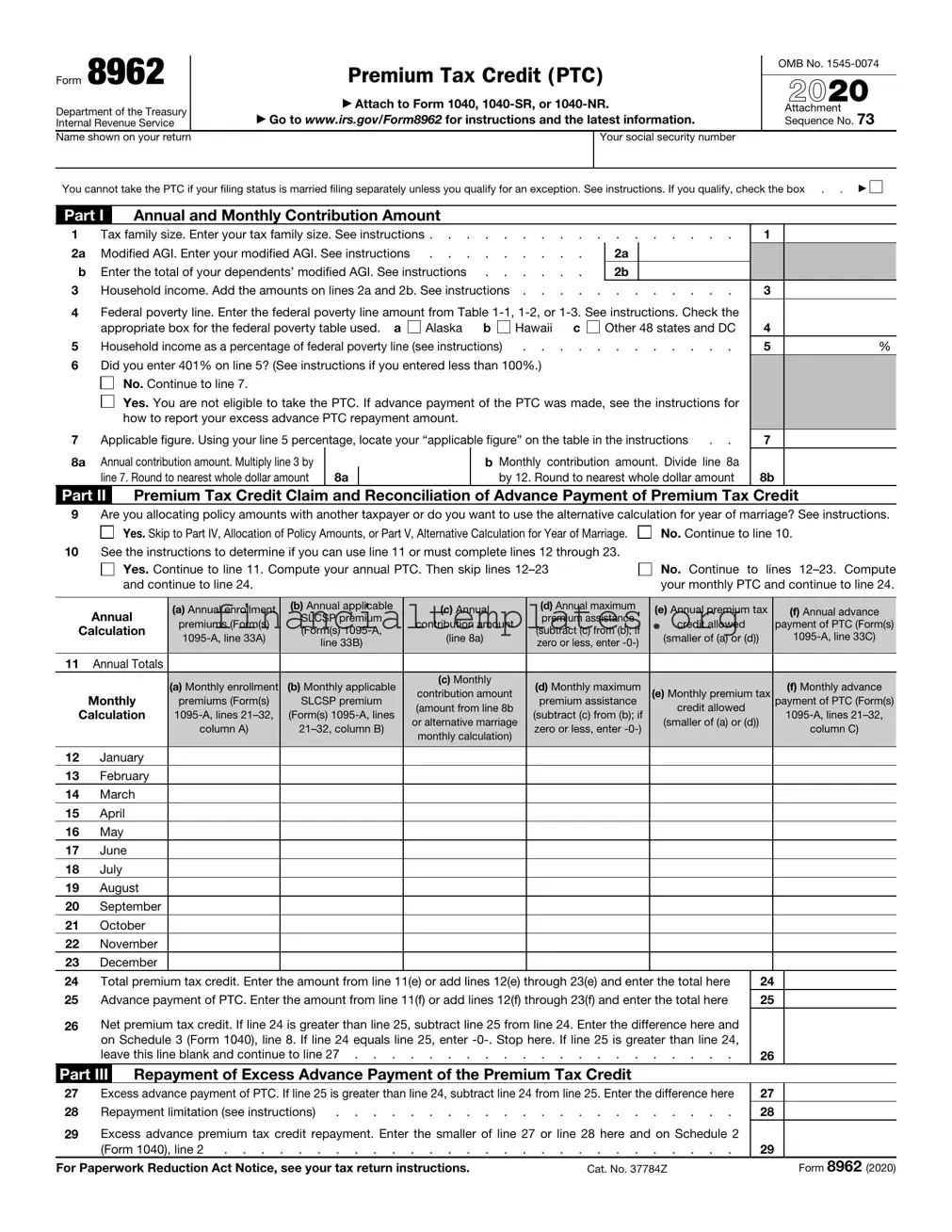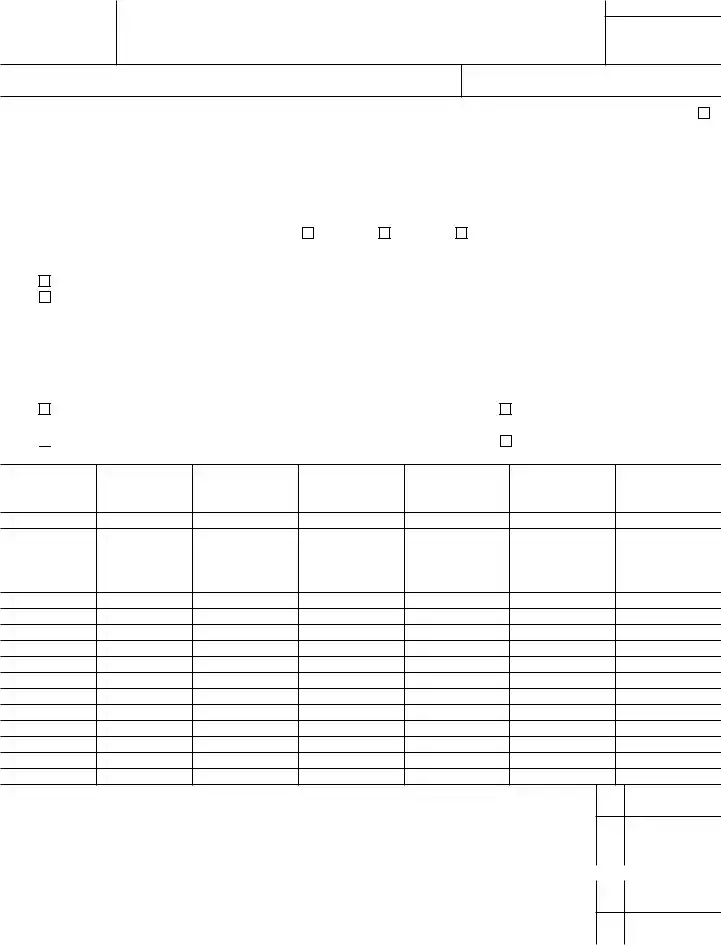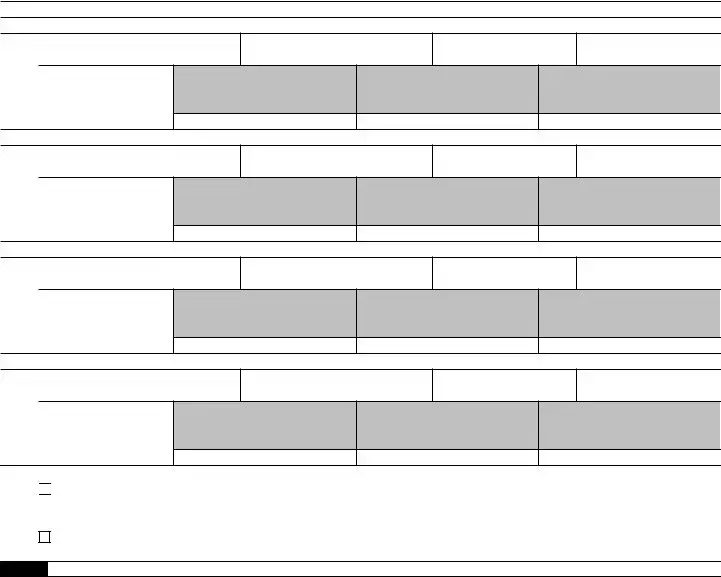The IRS Form 1040, known as the U.S. Individual Income Tax Return, resembles the IRS 8962 form in its role as a cornerstone document for tax filing. Both forms are integral to the annual tax filing process for individuals, with the 1040 form serving to calculate taxable income and total taxes due, while the 8962 form is used to compute the premium tax credit and reconcile any advance credit payments. This connection ensures taxpayers accurately report their financial situation and receive any credits for which they are eligible.
Similarly, the IRS Schedule C mirrors the IRS 8962 form through its function of reporting income or loss from a business operated or a profession practiced as a sole proprietor. Like the 8962, which aids in the calculation of premium tax credit eligibility based on income, Schedule C is crucial for determining the taxable income after business expenses, significantly affecting the taxpayer's overall financial assessment and eligibility for certain tax benefits or obligations.
The IRS Form 1095-A, the Health Insurance Marketplace Statement, is closely related to Form 8962 in content and purpose. Form 1095-A provides detailed information about health insurance coverage purchased through the Marketplace, which is essential for completing Form 8962. The information on Form 1095-A, such as the monthly premium and subsidy amount, directly feeds into the calculations required on Form 8962 for the premium tax credit, illustrating their interconnected roles in the tax filing process.
Form 1095-B, the Health Coverage form, and Form 8962 share a common goal of documenting health insurance information, albeit for different reasons. While Form 1095-B verifies that an individual has minimum essential coverage, thus avoiding the health care mandate penalty (applicable in tax years when the mandate was in force), Form 8962 focuses on calculating the premium tax credit. Both forms are pivotal for individuals to demonstrate compliance with health insurance requirements under the Affordable Care Act.
The W-2 form, or Wage and Tax Statement, also has a significant connection to Form 8962. It provides information about an employee's income and taxes withheld, which are key figures for accurately filling out the IRS 8962 form. Since the premium tax credit calculation on Form 8962 depends on the taxpayer's income, the data supplied by the W-2 form directly impacts the determination of the credit amount. This interrelation underscores the broader financial picture required for precise tax obligations and benefits assessments.
The IRS Form 8863, Education Credits (American Opportunity and Lifetime Learning Credits), shares common ground with Form 8962 by offering tax advantages based on personal circumstances. Form 8863 is used to claim education credits, reducing the tax bill for those who qualify based on tuition payments and related expenses. Similarly, Form 8962 helps taxpayers lower their insurance costs through the premium tax credit. Both forms thus play crucial roles in reducing the taxpayer's financial burden through specific credits.
Last but not least, the IRS Form 8965, Health Coverage Exemptions, parallels Form 8962 by dealing with health insurance information under the Affordable Care Act. Form 8965 is used to report any exemptions from the health insurance requirement, potentially reducing or eliminating the penalty for not having health coverage in tax years when such a penalty applied. Though coming from different angles—8965 for exemptions and 8962 for credit calculation—both forms address the tax implications of health care coverage, reflecting the complex interplay between health insurance status and tax liabilities.







